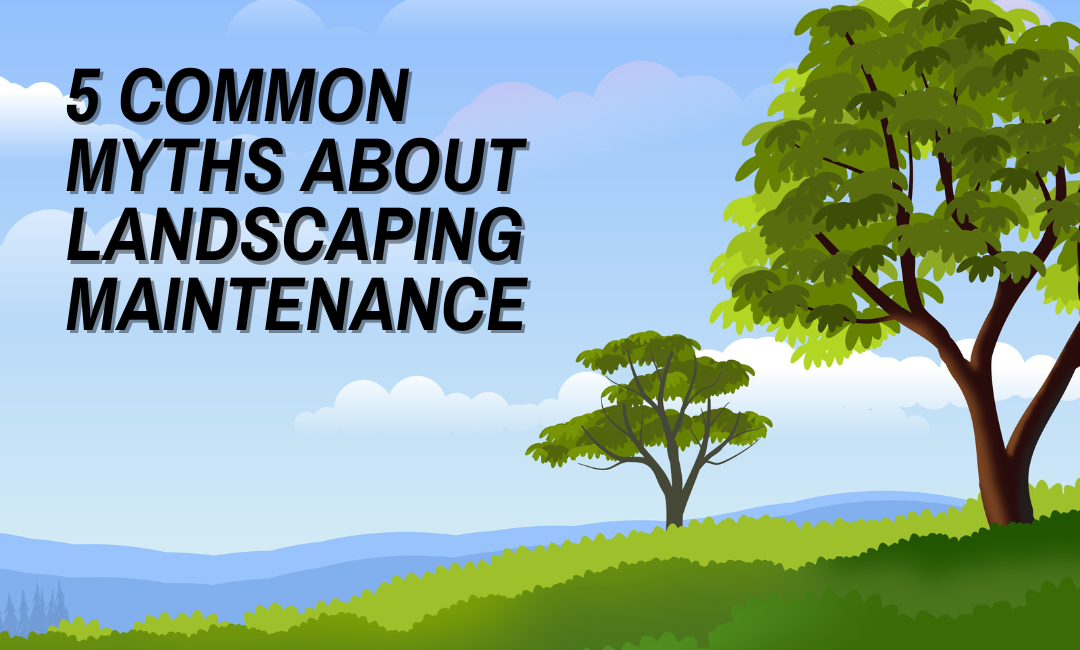When it comes to landscape maintenance, many homeowners and business owners fall victim to myths that can hinder their property’s full potential. Whether you’re maintaining a residential lawn or overseeing a large commercial space, it’s important to separate fact from fiction. MMC is here to debunk five common myths about landscape maintenance that might be holding you back from achieving that lush, healthy, and vibrant landscape.
1. Myth: Cutting Your Grass Short Means Less Mowing This is one of the most widespread misconceptions. Many people think that if they mow their grass shorter, it will grow back slower, meaning less frequent mowing. However, cutting your grass too short can actually cause more harm than good. Grass that’s cut too low, also known as “scalping,” can weaken the lawn by reducing its ability to photosynthesize, which can lead to brown patches and increased vulnerability to weeds and disease. The ideal height for most grass types is around 2.5 to 3 inches. Maintaining this height encourages deep root growth, improves drought tolerance, and makes your lawn look thicker and healthier.
2. Myth: Watering Your Lawn Every Day is Best Overwatering is one of the biggest mistakes people make when caring for their landscape. Contrary to popular belief, watering your lawn every day can drown the roots and lead to shallow root growth. It’s more beneficial to water deeply and less frequently. A good rule of thumb is to water your lawn one to two times a week, depending on the weather and soil conditions, allowing the water to penetrate deep into the soil. This promotes deeper root growth, making your lawn more drought-resistant and robust.
3. Myth: Fertilizing More Frequently is Better Fertilizing is crucial for lawn health, but the idea that “more is better” is far from true. Over-fertilizing your lawn can lead to nutrient imbalances, burn the grass, and pollute local waterways through runoff. The key is to fertilize at the right times of the year, typically in early spring and fall, using the correct amount for your specific grass type. Regular soil testing can also help you determine what nutrients your lawn is lacking, so you can apply fertilizer more effectively without overdoing it.
4. Myth: Weeds are a Sign of a Poorly Maintained Lawn While it’s true that weeds can take over poorly maintained lawns, they can also sprout in lawns that appear healthy. Weeds thrive in areas where the soil is compacted, there’s too much or too little water, or there’s a nutrient imbalance. Even with regular maintenance, certain types of weeds are persistent and may require targeted herbicide treatments. A proper weed control program, combined with regular mowing, watering, and fertilizing, can keep your landscape weed-free and healthy.
5. Myth: All Plants Need the Same Amount of Care A common mistake is treating all plants in your landscape the same way, whether it’s in terms of water, sunlight, or soil conditions. Every plant species has unique needs, and understanding these requirements is key to creating a thriving garden or landscape. For example, some plants thrive in direct sunlight, while others prefer shade. Similarly, certain plants require more water, while others are drought-tolerant. Consulting with a landscape professional can help you choose the right plants for your region and ensure each one gets the care it needs.
In conclusion, landscape maintenance is about more than just mowing and watering—it requires knowledge and attention to detail. Remember, proper maintenance not only enhances the beauty of your landscape but also protects your investment for years to come. If you’re unsure about how to best care for your landscape, don’t hesitate to reach out to MMC for guidance!

